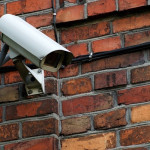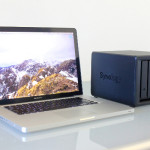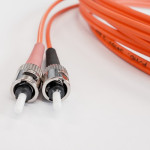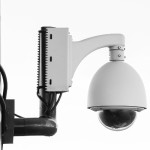CCTV Surveillance Cameras: Maintenance & Troubleshooting Tips
After you purchase and install a home security camera system, it is important to maintain it in order to preserve its quality and performance. From the surveillance cameras to the cables to video storage, all parts must be working properly to ensure optimal surveillance and security. Here are some helpful maintenance and troubleshooting tips for your surveillance system.
Maintenance
- Hard Drives
Check your hard drive regularly by simply playing back recent video. To make sure your cameras are properly recording, check the field of view and filter through different dates and times. Make sure you are getting the proper recording duration. A surefire sign that something is wrong is if the duration of footage stored has significantly decreased. For example, you used to get weeks or months of footage, but now it seems you are only getting a few days worth.
- DVR & Security Cameras
Cooling fans assist in preventing your DVR from overheating. Unfortunately, when they suck in the cool air, dust begins to build up as well. The accumulation of dust can damage the fan, resulting in overheating. Cleaning your cooling fan regularly can prevent this and is relatively easy. Computer dust sprays are available at many computer stores and you simply aim at the vent areas and spray.
The IR (Infrared) lights on your security cameras tend to attract spiders and bugs. Because of this, spiders tend to build their webs around the cameras in order to catch the bugs attracted to the light. Consequently, these spider webs interfere with your videos. Check your playback or live feed to see which cameras are affected. If you cannot kick the problem, it may be better to use cameras without IR and install a separate light source to illuminate the area.
Every so often, you should use a soft cloth or wipe to remove any dust or debris and clean the camera lens. A dust mop with a long handle can help you reach higher mounted cameras that are typically out of reach.
- Day/Night Recording
Camera sensors and other parts can wear out over time and will eventually need to be replaced. In addition, camera connections may need maintenance as environmental factors such as heat, cold, and moisture can affect them. If you see any signs of connections issues, such as lines in the image, flickering or other image issues, you should address these immediately to prevent further damage or total image loss.
Troubleshooting
Issue: Security cameras are out but the DVR is working.
- Restart the camera power box.
- Make sure the power box has power.
- Look for lights on it (sometimes these are inside the box and may be difficult to see).
- Many larger boxes have fans so look for signs of life.
- If these don’t work, schedule a service call as it may be a power box issue (although rare, power boxes sometimes go out).
Issue: DVR or NVR is not reachable by Internet (no phone or computer access).
- Did you reset your router to default or get a new router? If yes, then this needs to be repaired professionally.
- Try restarting your DVR and router as well as any other network devices (ex. network repeaters, adapters). If this does not resolve the issue, you may need professional assistance.
- Check all connections – make sure that the internet connection is firmly in place behind the DVR as well as in the router. These can come loose, especially when cleaning around the DVR or relocating something nearby that may have pulled the cord out.
Issue: DVR is not playing back video.
- Try rebooting the DVR (the rule of thumb for any issue with electronics).
- If that does not work, it may be a bad hard drive. Check the DVR and see if the hard drive is showing up in the settings. If not, this is a definite issue and you will need to replace your hard drive.
If you need help choosing the right security cameras for your property as well as installation services, feel free to contact us! You may browse our selection online at SecurityCamExpert.com or call 888-203-6294 to schedule a site survey or get a free quote. You can also find us on Facebook, Google+, Twitter, LinkedIn, and Pinterest.
Local Storage Options For Your Security System
There are plenty of aspects to consider when it comes to investing and installing a new security camera system. The goal is to deter any theft or crimes while capturing the necessary footage should an incident occur. With that said, aside from the security cameras you choose, your surveillance storage solution should be of high quality and capacity and tailored to your storage needs.
Storing your video footage locally makes it easier to access, and is usually easier to use. In addition, local storage options are much more cost-effective than other storage solutions. In terms of local storage, there are two main options: internal or external. Internal storage is saved within the camera whereas external storage is saved to a hard drive, usually located within a computer or CCTV DVR/NVR. Each option poses their respective advantages and disadvantages.
Internal Camera Storage
When you store your video footage internally, it is usually via a microSD chip within the camera. This option is ideal for those who don’t want to rely on internet access or wiring, as this can slow down your internet. In addition, since internal storage bypasses any transferring to external storage, video footage is nearly immediately available.
The biggest downside of internal storage is its limited storage capacity. In an effort to combat this, most security cameras using local storage only record when motion is detected. And these cameras are more vulnerable because the footage is stored internally, thus, if the camera is stolen, so is any video evidence that could be used to prosecute the thieves.
External Camera Storage
If you need to record footage throughout the day, external storage is a great option as you can store large amounts of video at a relatively low cost (especially compared to online storage.
Wired Camera Storage
Wired solutions will save your network a load of work and will be faster when watching live feed (minimal lag time). Typically, you will have some type of hub that encodes the recording, and then the wire will route to either a DVR (digital video recorder) or a personal computer with lots of storage space. If you plan on editing the video, personal computers are more convenient.
Unfortunately, wired security cameras are susceptible to severed wires. If you opt for a wired camera, you will want to embed the wire through the wall and make sure that your camera is securely mounted.
Wireless Camera Storage
If you opt for wireless cameras, you are choosing a very secure solution. These are also the easiest to install as you usually just plug it in, connect to a network and install software. Your video would be routed to either a personal computer or an NVR (network video recorder).
Unfortunately, wireless cameras are not ideal for smaller home wireless networks. They can slow down the internet and may be susceptible to delays in your video feed. Should you choose wireless solutions, just be sure that your network can handle the load.
While there is not a universal best storage solution, there are solutions that are better suited for you than others. Take the time to evaluate your needs to determine which storage solution would work best for you.
If you need help determining which video surveillance solution to choose, contact us at 888-203-6294 or browse our inventory online at SecurityCamExpert.com. You can also connect with us on Facebook, Google+, Twitter, LinkedIn, and Pinterest.
Security Camera Cables: Ethernet Vs. Fiber Optic
When installing a new surveillance system, whether at home or for your business, there are many factors that need to be considered. Aside from choosing the proper security cameras, devices, and management software, security camera cables are important and often overlooked.
Security camera cables are crucial to your surveillance system as they are responsible for power and data transmission within your system. You will likely be upgrading your system from analog closed-circuit television (CCTV) to an Internet protocol (IP)-based system. Thanks to special parts called encoders, if you are only upgrading your legacy system, you can keep your analog cameras and coaxial cabling in place. The encoders convert the analog output of the camera for use by an IP-based security system.
Alternately, if you are upgrading to IP cameras and want to keep coaxial cable in place, you would need to install adapters at both the device and the switch (coaxial cable cannot handle the digital output of the cameras).
Encoders and adapters are merely affordable, short-term solutions. And because they introduce new points of failure, they can become costlier in the long run.
IP Camera Systems Cables
Upgrading your system includes your security camera cables as well. For IP-based systems, there are two choices: Ethernet (copper) cable or fiber optic (glass) cable.
Ethernet Cable
Made from twisted copper wires, Ethernet cables carry data using an electrical current. Cat 5e is currently the most commonly used in home applications and can support speeds of up to 1,000 Megabits per second (Mbps) over 100 meters (m). Cat 6, 6a, 7, and 8 cables are more commonly used in business and data centers as they can handle larger data transfers, ranging from 10-40 Gigabits per second (Gbps).
Fiber Optic Cable
Fiber optic cables use light to send digital data along flexible, optically pure glass or plastic fibers that are about the width of a human hair and enable rapid movement of data. There are two types (single or multimode) which determine the speed and length of data transmission. The differences between the two types are significant and dictate how each is used.
- Single-Mode Fiber
Because it has a narrow core of optical glass surrounded by highly reflective cladding, single-mode fiber only carries data via a single mode of light (typically transmitted by laser). This allows for lower attenuation (data loss) over longer distances and, thus, is ideal for use in high bandwidth runs (ex. telecom and communications companies, college/university campuses).
- Multimode Fiber
Multimode fiber has a larger core, allowing several different light signals (more data) to pass through simultaneously. With a larger core comes narrower cladding, which results in more data attenuation. With that said, multimode fiber is better suited for shorter distances (ex. transmitting data and signals across a local area network).
Ethernet Vs. Fiber Optic Cables
Choosing between the two options will depend on your individual needs. Here’s a look at the strengths and weaknesses of each.
Data Handling, Speed & Distance
- Ethernet cable has improved over time, with the Cat 7 and Cat 8 able to support up to 25 Gpbs to 40 Gbps over 30 m runs. Unfortunately, regardless of category, copper has a much higher attenuation rate, which only increases with the distance of the run. Thus, you would need to install an amplifier or repeater for every 100 m (328ft) of cable.
- Fiber optic cables are the better choice, as multimode cables can reliably handle 40 Gbps and up to 100 Gbps depending on the quality of the cable. Speed and distance depends on the light mode, but fiber can reliably transmit data between 610-2,000 m (2,000-6,562 ft) before the signal requires amplification.
Usability, Safety & Security
- Ethernet cabling is straightforward and ideal to use in tight spaces since copper is a flexible metal and can bend a great deal before it succumbs to the stress. However, these cables pose very minimal fire hazard risk, particularly if they are used to carry power to a device (such as an outdoor security camera). And if you are running Ethernet cables to outside cameras (ex. on light poles in parking lots, at the edge of a property), there is also a risk of attracting a lightning strike. In addition, they also post a security risk since they tend to leak data, and are also susceptible to outside interference (ex. electrical sources, other data cables).
- Fiber optic doesn’t radiate data signals at all and provides good security, but it’s not without its faults. Because it is made of glass, despite its flexibility, there is a chance for breakage if bent too far. There is also a greater chance of damaging the cable during installation or during some later construction, and it is difficult to properly splice it. These concerns should be raised with vendors you speak to before purchasing.
Cost
- Ethernet is more affordable in the short term. The cable, its components, and installation tend to be cheaper thanks to its ease of use. However, these tend to require more regular maintenance, thus increasing ownership costs over time.
- Fiber optic is definitely more expensive up front, as cost of cables (especially single mode) and installation are much higher. Despite this, it has a lower ownership cost over time thanks to less maintenance (compared to copper). Also, the cables can more easily handle expanded bandwidth without having to run new cable.
While both Ethernet and fiber optic cables have their advantages and disadvantages, it really depends on your security needs. Have you chosen between the two? Share your experience with us on Facebook, Google+, Twitter, LinkedIn, and Pinterest.
For a great selection of CCTV security cameras, systems, and surveillance equipment, please visit SecurityCamExpert.com or call 888-203-6294 today!
PTZ Cameras: What To Look For
PTZ security cameras offer Pan, Tilt, and Zoom capabilities for more advanced and comprehensive surveillance. Because of their unique flexibility and broad coverage, PTZ cameras are often chosen to remotely monitor large areas such as parking lots or stadiums. If you are considering installing PTZ surveillance cameras for your property, here are some of the best PTZ camera features and benefits.
Large Field Of View
Depending on where you install your PTZ camera, it could have a 360 degree field of view. In addition, most cameras can be pre-programmed to provide specific viewing angles at pre-determined times. Pan and Tilt can also be pre-programmed. Thanks to this, PTZ cameras can do the job of a multi-camera installation, making them a cost-effective and smart alternative for large area surveillance and protection.
Motion Tracking
Most PTZ cameras come with built-in tracking which can be set to detect motion and track a person or object, automatically panning, tilting or zooming to follow the person or object as it moves. This feature can prove invaluable should a theft or vandalism occur on your property. When choosing a PTZ camera, full motion tracking capabilities is a must.
Night Vision
This is an important feature in nearly all security cameras, but especially in areas with poor lighting conditions. The modern, more advanced PTZ cameras can capture images in total darkness thanks to LEDs and special IR filters. The small LEDs emit infrared light, which is not visible to the human eye, but with the special IR filter, the camera sees a well lit area.
Remember that a PTZ camera that is rated for a detection range of 600 feet or more will usually be rated for a max range of 400 feet for night vision. Also, it is recommended that you set up your PTZ cameras in the same lighting conditions they will be recording in, whether dark or light.
Weatherproof
If you will be installing PTZ cameras outdoors, they must be weatherproof. Most PTZ cameras are designed to withstand harsh elements, but it is wise to double check the specifications to ensure their durability. Weatherproof PTZ cameras can be installed in very remote locations such as rooftops or the sides of tall buildings.
Powerful Zoom
PTZ security cameras have a detection ability that ranges from 150 feet (on the low end) up to 1,000 feet (on the higher end). The ability to zoom in on a person or object ranges from 12X to 36X for higher level PTZ Speed Domes. This makes them ideal for large parking lots or building tops as it allows the camera to be discreetly out of sight while still providing the option to zoom in for a better picture of what is happening.
Tamper Resistant
The best place for a PTZ camera is mounted high above the ground, which enables the best view possible, a wide 360 degree range, and added protection. As mentioned, most PTZ cameras are built tough, with rigid metal housings and high-strength polycarbonate domes that are virtually shatterproof to vandals.
Alarm Inputs
Most PTZ cameras have four alarm inputs, which connect to other important devices (ex. motion detectors, door contacts, glass break sensors). The camera can be programmed so that when activity occurs in a given area, other programmed activity is halted in order to zero in and record what is going on.
Auto Focus
The good PTZ cameras will have full range auto focus built in. This ensures clarity no matter where you pan, tilt or zoom. In addition, most have an auto adjust IR LED that quickly focuses the picture when moving the camera in areas of complete darkness. This feature is almost always missing from cheaper cameras.
Simplified Installation
Because they can cover a wider area, it may be more cost-effective to install a couple PTZ cameras to monitor your property (ex. parking lots, garages) rather than implementing several fixed security cameras. You can save on both the initial cost and installation of your system.
High Definition Options
Higher end PTZ Speed Domes are also available in IP versions, which will deliver resolutions from 720i to 1080P, and with HD-SDI technology, which provides high definition video in full 1080P resolution. The HD-SDI PTZ cameras are easier to install and maintain than IP cameras since they are installed and set up exactly the same way as standard analog cameras.
These types are only recommended when you need the highest resolution images possible. They require 2-4 times as much hard drive space as regular analog security cameras and are rather expensive for large installations.
For a great selection of PTZ security cameras and other surveillance system equipment, please visit SecurityCamExpert.com or call 888-203-6294. You can also connect with us on Facebook, Google+, Twitter, LinkedIn, and Pinterest.



